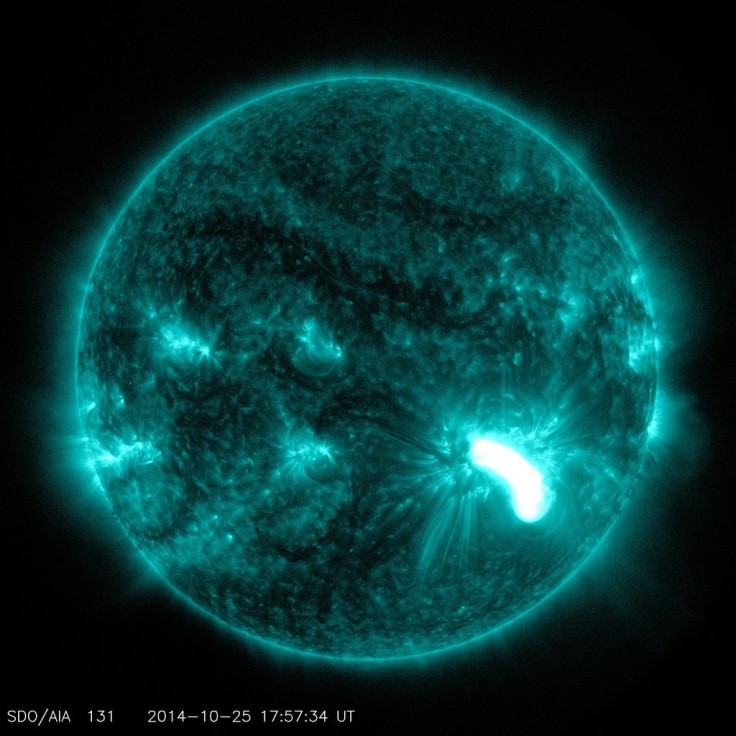Sun Unleashes Major Solar Flare; Coronal Mass Ejection Could Reach Earth This Weekend
KEY POINTS
- A "significant" solar flare erupted from the sun Thursday
- It caused a "strong" radio blackout event
- A radiation storm warning is in effect until Friday evening
The sun emitted a "significant" solar flare Thursday. The coronal mass ejection could reach the Earth this weekend, possibly bringing a Halloween geomagnetic storm.
The solar flare erupted from Region 2887 at about 11:35 a.m. EDT Thursday, the NOAA's Space Weather Prediction Center (SWPC) noted. The event, which is classified as an X1 flare, also "appeared to have coronal mass ejection (CME) signatures."
As NASA explained, X-class flares are the "most intense flares." The number alongside the classification also adds more information about its strength. For instance, an X2 flare is twice more intense as an X1, while an X3 is three times more intense and so on.
"POW! The Sun just served up a powerful flare!" NASA noted in a tweet. It also shared an image of the flare on its Solar Cycle 25 blog as captured by its Solar Dynamic Observatory, which is constantly watching the sun.
POW! The Sun just served up a powerful flare! ☀️ 💥
— NASA Sun & Space (@NASASun) October 28, 2021
At 11:35 a.m. EDT today, a powerful X1-class solar flare erupted from the Sun. NASA’s Solar Dynamics Observatory caught it all on camera. 📸
More on our Solar Cycle 25 blog: https://t.co/L5yS3hJRTx pic.twitter.com/iTwZZ7tCOY
Solar flares are "powerful bursts of radiation," the agency noted. When this radiation reaches the Earth, it can interfere with certain systems such as GPS, spacecraft orbits, satellite electronics and, in more extreme events, power grids.
In the case of Thursday's flare, the SWPC noted that it caused a temporary R3 event. An R3 pertains to a "strong" radio blackout event wherein there could be a "wide area blackout of HF radio communication, loss of radio contact for about an hour on sunlit side of Earth." Low-frequency navigation may also be affected for about an hour.
The associated coronal mass ejection could reach the Earth sometime Saturday or Sunday, just in time for Halloween, Spaceweather.com reported, noting that new data could provide more precise forecasts.
Currently, however, an S1 radiation storm alert is already in place in relation to the X1 flare. Considered a "minor" alert with only minor possible impacts on HF radio in the polar regions, the S1 radiation storm began at 1:40 p.m. EDT Thursday, and the alert will persist until Friday at 8:40 a.m.
This is so far the second X-class solar flare of the current Solar Cycle 25, SpaceWeatherLive.com reported, noting that it was certainly an "eruptive" event.

© Copyright IBTimes 2025. All rights reserved.






















